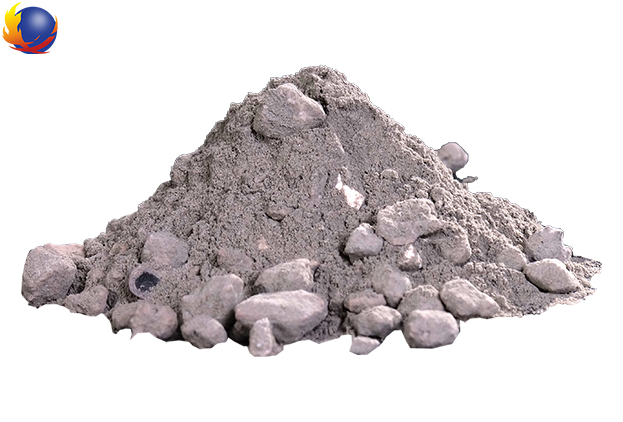Clay bonded refractory castable is a castable that uses soft clay as a binder and is formulated with refractory aggregates, powders and admixtures in proportion. It is referred to as clay refractory castable. It is fundamentally different from clay refractory castables. The so-called clay refractory castable means that the refractory aggregate is clay clinker and is formulated with any suitable binding agent.
Compared with aluminate cement refractory castables, ordinary clay refractory castables have the characteristics of high strength, no decrease in medium temperature strength, and good peeling resistance; compared with refractory plastics, they have the characteristics of convenient construction and easy storage. Its operating temperature is generally 1400~1500℃. Ordinary clay refractory castables are widely used in flame furnaces such as soaking furnaces and heating furnaces, and have achieved good economic results.
The mix ratios of clay refractory castables are diverse. In other countries, bauxite clinker and special grade clay clinker are generally used as aggregates, with a dosage of 55% to 75%; refractory powder is alumina powder and bauxite clinker powder, with a dosage of 20% to 35%; Ball clay powder is used as the binding agent, and the dosage is 10% to 15%; polyphosphate dispersant 0.05% to 1.0%, high alumina cement accelerator 0.5% to 1.0%, and water 8% to 9%. In China, refractory aggregates generally use second- and third-grade alumina clinker and special-grade clay clinker. The dosage is 60% to 70%. The maximum particle size is 10mm or 8mm. The particle gradation is 5~10(8)mm45%. ~60%, 0.15~5mm40%~55%. Refractory powder is made of special grade or first or second grade bauxite clinker. The fineness requirement is less than 0.09mm and should be greater than 90%. The binder is best to use Guangxi mud (or Yongji 4* mud). It can also be used as coke mud or For composite use of Suzhou mud and Nanjing mud, the fineness requirement is less than 0.09mm and should be greater than 60%. The finer the better, the dosage is generally 9%~12%; the dispersant is sodium tripolyphosphate, the dosage is generally 0.1% ~0.2%; the coagulant uses high alumina cement and aluminum-60 cement, the compressive strength is 525MPa or 625MPa, the dosage is 1.5% ~ 2.5%, when using Portland cement with a compressive strength of 525MPa, the dosage is 0.15% ~0.20%; the water consumption is 8% ~ 10%, and should be used as little as possible while ensuring the ease of construction.
The basic technical measures for preparing high-strength clay refractory castables are to improve the grade of refractory aggregates and powders, and add ultrafine powder and composite admixtures to reduce the amount of water used during mixing, enhance the compactness of the organizational structure, and reduce porosity. , improve strength and high temperature performance. In terms of refractory aggregates, materials such as white corundum, brown corundum, mullite and sillimanite can be used in whole or in part. At the same time, the grade of high-alumina clinker must be improved, which can improve the high-temperature performance of clay refractory castables. Generally speaking, the cost of using corundum, mullite, sillimanite and other materials is relatively high, but when added by 20% to 30%, the effect will be obvious.



